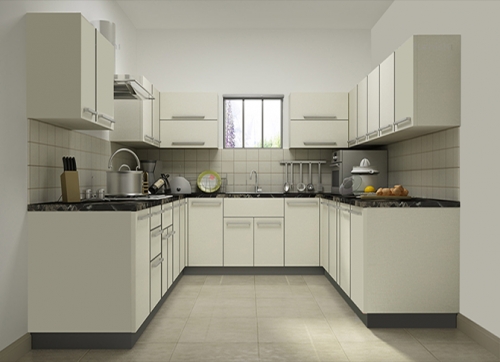Mmsh350
IT Specialist : Am A Successful IT Professional With Expertise In Full Stack Web Development.
Wants to meet Career Partners : Goal Achievers
Articles
189
Followers
44
profile/5736download.png
Mmsh350

Kitchen Pros Say You Should Only Sharpen Your Knives Once A Year
~6.7 mins read
You’ve heard it before: A good, sharp knife is key to cooking well. Not only will it make meal prep easier, but it’s less likely to slip and cut you since a dull knife requires more pressure to use. There are two main ways to sharpen your Western- or Japanese-style knives: You can use a knife sharpener (either handheld or electric) or a stone. A sharpener does most of the work for you with little room for error, while a store requires learned technique that can take a long time to master.
Select a knife sharpener: Handheld knife sharpeners are more gentle than electric knife sharpeners and can be used more often because they typically shave off less metal. Fischer recommends using a handheld sharpener about once a month and an electric one about once a year, although he's flexible and usually lets his knife's performance tell him when it's time. Place the manual or electric sharpener on a steady surface. While holding down the sharpener in one hand and the knife’s handle in the other, place the heel of the knife, with the sharp edge facing down, into the "coarse" section for the appropriate style knife (Western or Japanese). Pull back the entire blade five to six times. "Let the weight of the knife do the work," says Fischer, “and always err on the side of a lighter touch.†Repeat this motion on the "fine" section of the sharpener to polish. Soak the stone in water until the bubbles disappear, about 10 to 20 minutes. Some stones need to be oiled instead of soaked — always check the manufacturer’s instructions before starting. Transfer the stone to a slip-proof surface, such as a damp kitchen towel spread out on a table. (Some, like this one from Sharp Pebble, come with a slip-proof holder.) Position the stone vertically. While holding the knife in one hand, place the heel on the coarse side of the stone with the sharp edge facing you. Keep the sharp edge on the stone and lift the back of the knife to form an angle (about 20º for Western knives and 15º for Japanese knives). Pro tip: You can guesstimate this by standing your blade on a 90º angle, then halving and halving again to form a 22.5º angle that needs to be adjusted slightly. Using medium pressure, pull back along the length of the stone to sharpen. Repeat five to six times on each section. (Beginners may need to do this step more times.) Do not drag the blade back toward you on the stone. After one section is complete, move onto the next by moving the blade over in the direction of the handle. Repeat, section by section. Replicate on other side of the blade by flipping the knife and start sharpening on the top of the stone. Keep in mind that most knives are not sharpened the same on both sides: Check your manufacturer’s instructions to learn if your angles should be even or 70% on one side and 30% on the other. Repeat entire process on the fine side of the stone. Note that you may need to splash water onto the fine side while sharpening to rub away any accumulated grit. Place the metal tip of the honing steel on a steady surface. Hold the knife in your other hand and with the sharp edge facing downward. Rest the heel of the blade on the hone are a slight angle (typically 14º). Pull the knife back against the hone along the entire length of the blade five or six times; "the lighter the force the better," says Fischer. Repeat on both sides of the blade.
You’ll likely know it’s time to sharpen when you have trouble cutting ripe tomatoes for a recipe, since this is one of the more difficult foods to slice through cleanly without squishing. To be sure, before sharpening, hold up a piece of paper and attempt to slice through: A dull knife will dent the edge while a sharp one will create a long clean cut. Test this way again at the end of sharpening to ensure your knife is in tip-top shape.
Here are the top tips on how to use any kind of sharpener, according to the Good Housekeeping Institute kitchen pros and Adam Fischer, Vice President at Wusthof.
How to sharpen your knife with a knife sharpener
When buying a knife sharpener, don't forget to consider what type of knife you have; Western knives have different blade angles than Japanese knives, which require a dedicated sharpener or sharpening section. Here's how to get started:
How to sharpen your knife with a whetstone
These rectangular blocks work to sharpen knives, but require patience and a learned technique since a novice could easily damage or reshape a blade. Most times, your knife will be longer than the stone so you'll have to sharpen in sections on each side of the blade.Choose a whetstone with two different grits: A coarse grit of 1,000 is recommended for most knives and a fine grit of 6,000.
How to hone your knife between sharpenings
Use a hone (not a sharpening steel!) to prolong the need for sharpening, says Fischer; its ridges will realign a blade’s microscopic teeth that fall out of place every time you use it. Pros recommend honing before each use to cut back on how often you need to sharpen, too. To use:
profile/5736download.png
Mmsh350

The Nigerian Kitchen
~1.4 mins read
Hello,
Thanks for being a great part of this initiative, due to my kind of background and societal setting, it was necessary for a woman to know so much about foods and domestic works in its entire scope.
Thanks for being a great part of this initiative, due to my kind of background and societal setting, it was necessary for a woman to know so much about foods and domestic works in its entire scope.
I learned to make Nigerian foods at a very young age, I think I made my first soup at the age of eleven, I still remember vividly, it was a vegetable soup with cow liver. It was my parent’s duty to prepare food for the family but my dad insisted that I give it a whirl and that was it.
Over the years that followed I made even more Nigerian foods, experimented heavily on different Nigerian recipe and just some years back I thought of setting up the Nigerian Kitchen Initiative – this site, the videos, Facebook page as well as the Weekly newsletters to help folks around the world with making Nigerian Delicious Foods.
It has been a wonderful journey so far, so much has happened and so much is about to happen.
We started with simple – easy to make Nigerian foods, then several other complex recipes, continental dishes, breakfast recipes, dinner recipes etc.
I have set up this page just to hear your opinion on this entire program, have you benefited? Have you tried any of my recipes? Did it turn out right?
Please tell me about your experience in two or three paragraphs with the comment form below. Thanks!
Also tell me a little bit about you.
If you even wish to take your cooking to a whole new level, You can get your hands on Our Premium Guide, That is the surest way to becoming an expert cook in one month or less
original content here : https://allnigerianfoods.com/the-nigerian-kitchen
Advertisement

Link socials
Matches
Loading...
